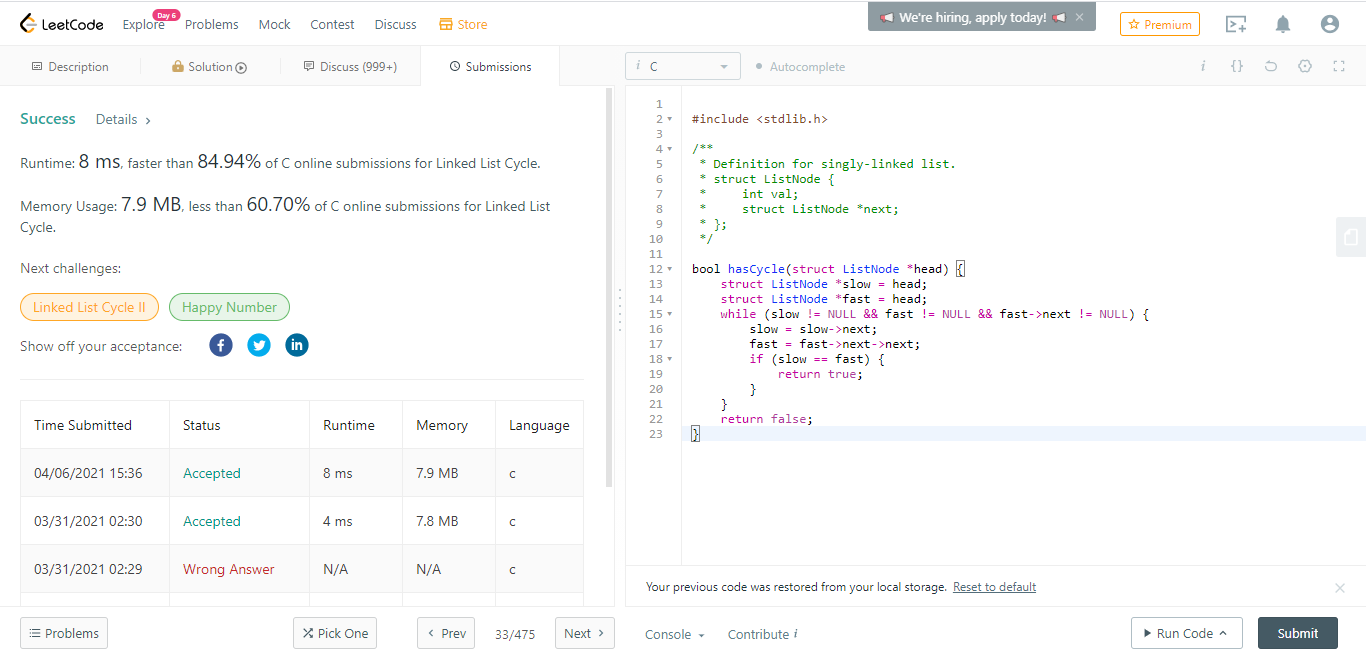|
|
马上注册,结交更多好友,享用更多功能^_^
您需要 登录 才可以下载或查看,没有账号?立即注册
x
本帖最后由 Judie 于 2021-4-6 14:46 编辑
- 141. Linked List Cycle #Easy
- Given head, the head of a linked list, determine if the linked list has a cycle in it.
- There is a cycle in a linked list if there is some node in the list that can be reached again by continuously following the next pointer. Internally, pos is used to denote the index of the node that tail's next pointer is connected to. Note that pos is not passed as a parameter.
- Return true if there is a cycle in the linked list. Otherwise, return false.
-
- Example 1:
- Input: head = [3,2,0,-4], pos = 1
- Output: true
- Explanation: There is a cycle in the linked list, where the tail connects to the 1st node (0-indexed).
- Example 2:
- Input: head = [1,2], pos = 0
- Output: true
- Explanation: There is a cycle in the linked list, where the tail connects to the 0th node.
- Example 3:
- Input: head = [1], pos = -1
- Output: false
- Explanation: There is no cycle in the linked list.
-
- Constraints:
- The number of the nodes in the list is in the range [0, 104].
- -105 <= Node.val <= 105
- pos is -1 or a valid index in the linked-list.
-
- Follow up: Can you solve it using O(1) (i.e. constant) memory?
追及问题

|
|
 ( 粤ICP备18085999号-1 | 粤公网安备 44051102000585号)
( 粤ICP备18085999号-1 | 粤公网安备 44051102000585号)